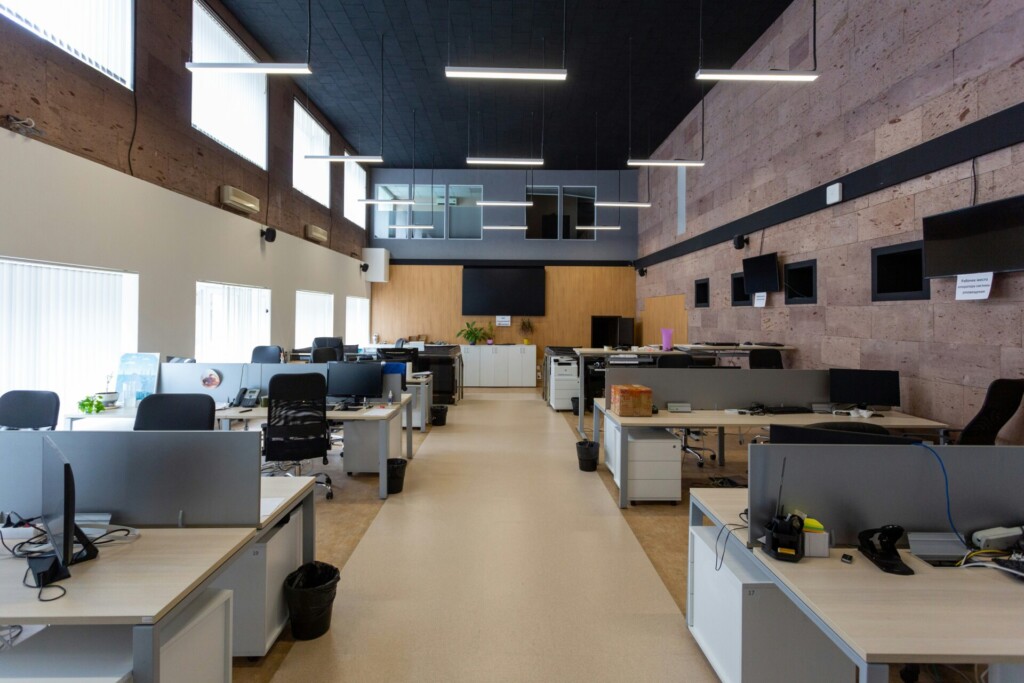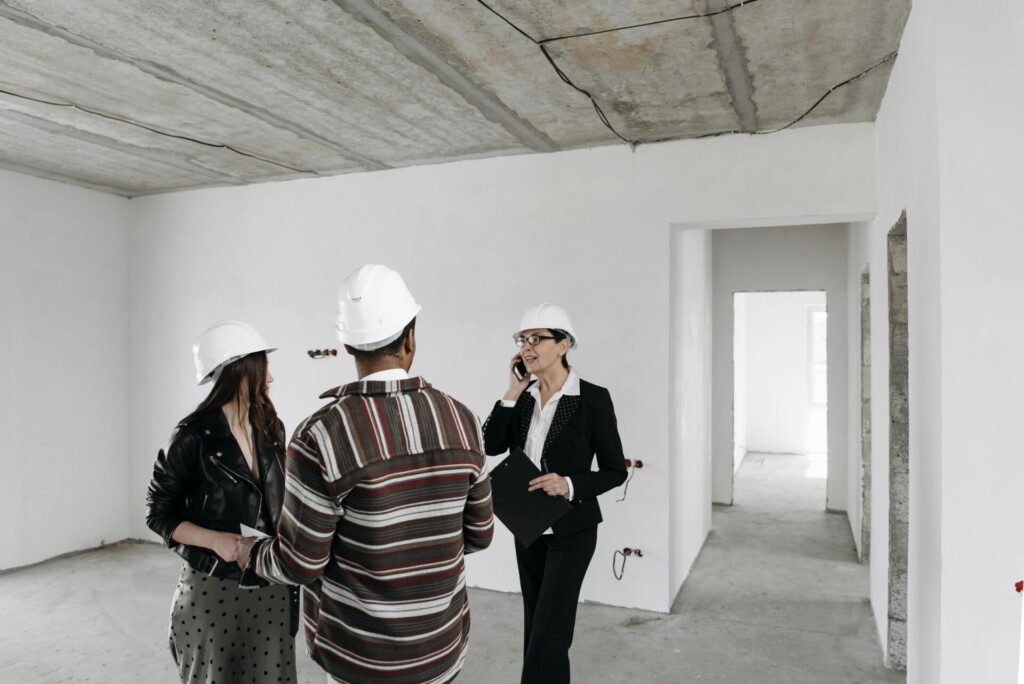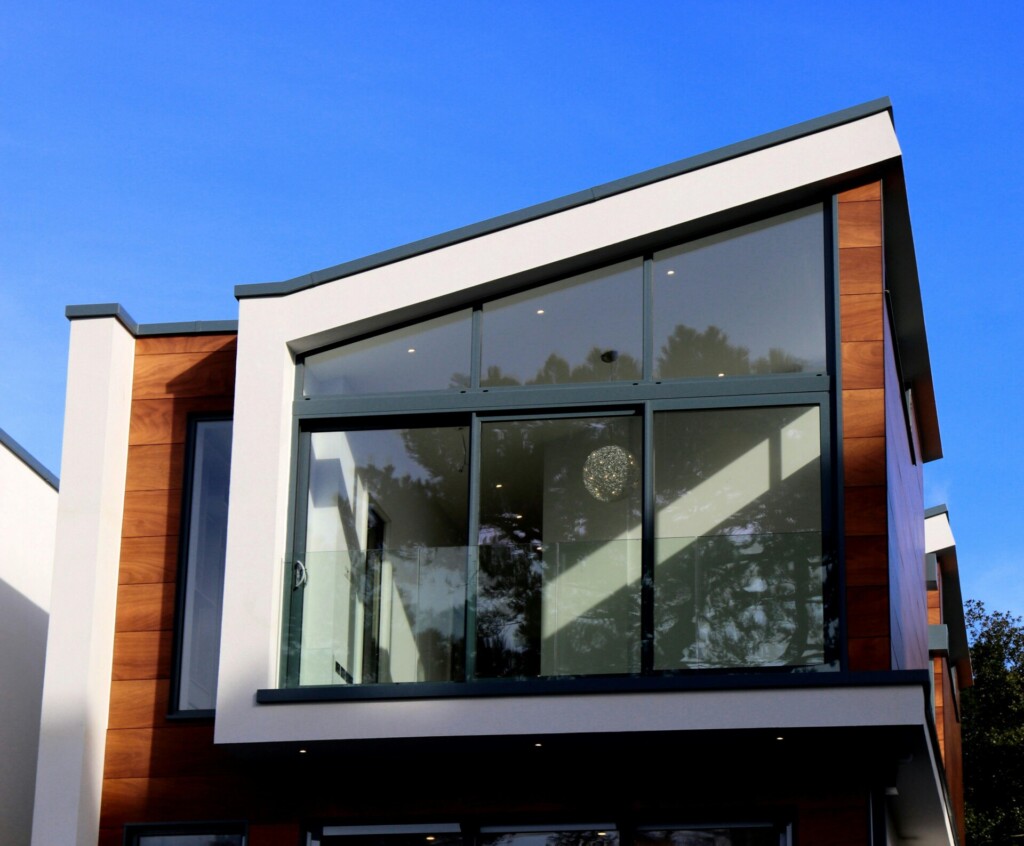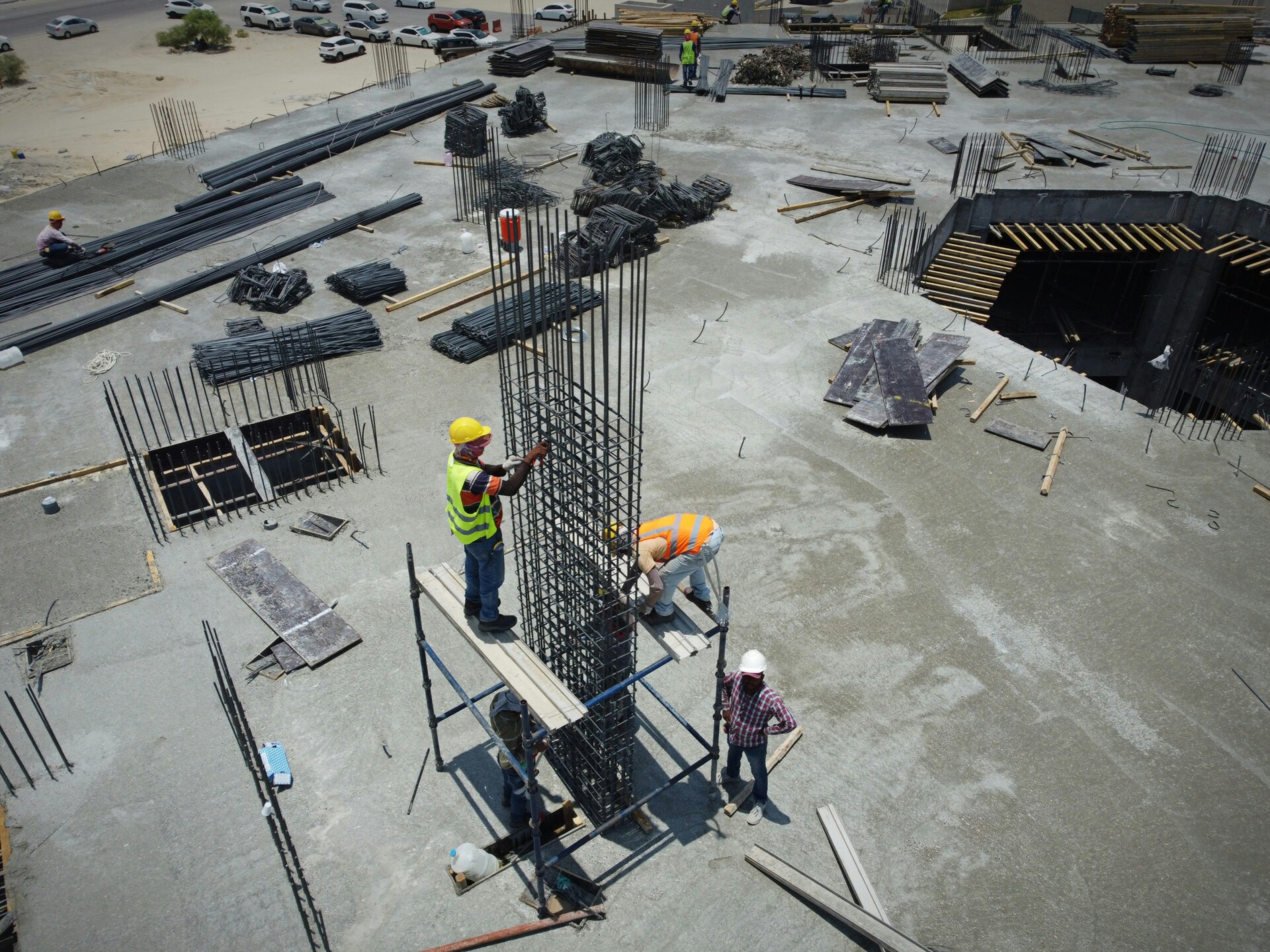Office space price per square foot represents the annual rent charged for each square foot of space. This metric serves as the standard method for pricing and comparing office leases across different properties and markets.
Recent national data shows full-service equivalent listing rates averaging $32.79 per square foot, with vacancy rates around 18.6%. These benchmarks provide essential context for teams evaluating budgets and positioning themselves for effective lease negotiations in today’s commercial real estate market.
How Do You Calculate Office Rent From Price Per Square Foot?

The fundamental formula drives every commercial lease calculation: Price per square foot × rentable square footage = total annual rent. Most markets quote these rates on an annual basis, even when tenants make monthly payments. Understanding this calculation prevents budget surprises and ensures accurate lease comparisons.
The critical distinction lies between usable square footage and rentable square footage. Usable square footage represents the space your business directly occupies and controls. Rentable square footage includes your usable space plus a proportionate share of common areas through what’s called the common area factor.
Understanding The Common Area Factor
The common area factor accounts for shared building spaces like lobbies, hallways, restrooms, and mechanical rooms. This factor typically ranges from 15% to 25% in office buildings, depending on the building’s design and efficiency. We calculate it by dividing the building’s total rentable area by its total usable area.
For example, a building with a 16.7% common area factor means tenants pay for their usable space plus an additional 16.7% to cover their share of common areas. This calculation ensures all building operational spaces receive proper cost allocation across tenants.
Step-By-Step Calculation Example
Consider a tenant requiring 3,000 usable square feet in a building with a 16.7% common area factor. First, calculate the additional common area space: 3,000 × 0.167 = 501 square feet. Next, add this to the usable space: 3,000 + 501 = 3,501 rentable square feet.
At $32.00 per square foot annually, the calculation becomes: 3,501 × $32.00 = $112,032 per year. Converting to monthly rent: $112,032 ÷ 12 = $9,336 per month. This demonstrates how the common area factor directly impacts total lease costs.
Regional Quoting Variations
While most U.S. markets quote annual rates, some regions like California commonly present monthly figures. However, these monthly quotes still derive from annual calculations. Understanding your market’s quoting convention prevents confusion during lease negotiations.
The annual lease rate serves as the foundation for all rent calculations, regardless of payment frequency. This standardization allows for consistent market comparisons and financial planning across different properties and regions.
What Are Typical Office Space Prices Per Square Foot In Major U.S. Markets?
Office asking rents vary dramatically across metropolitan areas and submarkets. These market benchmarks reflect recent annual averages that help developers and property owners establish baseline expectations for their projects.
High-cost coastal markets lead national pricing. Manhattan office rent averages $71 per square foot annually, while San Francisco commands approximately $60 per square foot. Los Angeles follows at $41 per square foot, demonstrating the premium businesses pay for access to these established economic centers.
Mid-tier markets offer substantial cost advantages while maintaining strong business infrastructure. Miami asking rents reach just under $50 per square foot, with Boston at $49 per square foot. Austin’s technology hub status drives rates to $42 per square foot, while Washington, D.C. averages $40 per square foot.
Secondary markets present compelling value propositions for cost-conscious developments. Philadelphia office space costs approximately $38 per square foot, while Seattle averages $37 per square foot. Atlanta provides southeastern access at $36 per square foot.
Midwest markets deliver the strongest affordability metrics. Dallas office rent averages $29 per square foot annually, while Chicago hovers around $28 per square foot, making these markets attractive for companies prioritizing operational cost management.
Submarket variations within metropolitan areas can shift these benchmarks significantly. Downtown cores typically command premium pricing compared to suburban locations, while Class A properties in prime districts often exceed these averages by 20-40%. We analyze these submarkets carefully when evaluating construction feasibility and positioning strategies for our development partners.
What Factors And Lease Types Change The Price Per Square Foot?

Price per square foot serves as the foundation for comparing office spaces, but several key factors can significantly adjust what you actually pay. Location drives the most dramatic variations, with downtown cores commanding premium rates that often exceed suburban properties by 50% or more. Prime business districts, transit accessibility, and proximity to amenities create pricing tiers that reflect tenant demand and convenience.
Property size and configuration also influence rates. Larger footprints typically achieve lower per-square-foot costs due to economies of scale, while unique features like corner locations, high ceilings, or premium views can push rates higher. We often see buildings adjust rates based on floor level, with ground-floor retail commanding different pricing than upper-floor office space.
Operating expenses create another layer of cost variation. Properties with higher utilities, extensive maintenance requirements, or elevated property taxes naturally carry higher rates. Buildings with advanced HVAC systems, security features, or specialized infrastructure pass these costs through to tenants in different ways depending on the lease structure.
Lease Structure Impact On Pricing
The lease type fundamentally changes how costs are distributed between landlord and tenant. Triple Net (NNN) leases typically offer lower base rents because tenants pay property taxes, insurance, and maintenance separately. This structure shifts financial responsibility to tenants but provides transparency about actual building costs.
Modified Gross arrangements split the difference by combining base rent with select expenses. Tenants might pay utilities and janitorial costs while landlords cover taxes and insurance. This hybrid approach allows flexibility in negotiations and can help balance cost responsibilities based on tenant needs and landlord preferences.
Full Service Gross leases bundle all operating costs into one inclusive rate. While the quoted price appears higher, landlords cover property taxes, insurance, maintenance, and often utilities. This structure provides predictable monthly payments but typically includes a premium to cover landlord risk and administrative costs.
Hidden Costs And Pass-Through Items
Beyond the base rate and lease structure, additional charges can significantly impact total occupancy costs. CAM charges cover common area maintenance like lobbying cleaning, landscaping, and parking lot upkeep. These costs are typically shared among all tenants based on their proportional space usage.
Utilities represent another variable cost that affects total expenses. Some properties include basic utilities in the lease rate, while others require separate arrangements with utility providers. HVAC costs can vary dramatically between seasons and building efficiency levels.
Annual escalations build cost increases directly into lease agreements. These adjustments typically range from 2-4% annually or tie to inflation indices. We evaluate escalation clauses carefully during lease negotiations because they compound over multi-year terms and can substantially increase total costs.
Which Market Trends Are Impacting Office Space Price Per Square Foot Now?
National office market trends reveal a landscape shaped by persistent high vacancy rates and evolving tenant demands. Full-service equivalent listing rates hover near $32.79 per square foot, while vacancy rates remain elevated at approximately 18.6%. These metrics reflect the ongoing market corrections following pandemic-driven shifts in office utilization patterns.
Interest rate hikes since 2022 created significant pressure on office asset values and pricing structures. Office sale prices fell roughly 22% between 2022 and 2024, demonstrating how capital market conditions directly impact pricing benchmarks. Despite this decline, 2025 year-to-date sales have shown modest recovery, averaging about $195 per square foot compared to the 2024 average of approximately $179 per square foot.
Regional Market Variations
Western markets continue to command the highest asking rents despite elevated vacancy levels. San Francisco leads with asking rents around $64 per square foot, though vacancy rates sit in the mid-to-high 20% range. Silicon Valley submarkets can exceed $115 per square foot for premium assets, while downtown areas often price at roughly half that rate, reflecting the flight to quality trend affecting tenant decisions.
Southern markets present mixed conditions with Miami topping regional asking rents at approximately $56 per square foot while maintaining relatively low vacancy near 13%. Austin represents the other end of the spectrum, with asking rents in the mid-$40s range but vacancy rates climbing into the high 20% range, reflecting overbuilding during the previous development cycle.
Midwest markets offer the most affordable office space pricing nationally. Chicago asking rents cluster around $27 to $28 per square foot, while Detroit provides even lower rates near $21.56 per square foot. These markets benefit property owners seeking cost-effective expansion opportunities, though they also reflect broader economic challenges in traditional industrial regions.
Construction Pipeline And Tenant Preferences
Construction starts remain modest across most markets, with developers focusing on highly amenitized, modern assets rather than broad inventory expansion. This selective development approach reflects current tenant preferences and helps prevent further oversupply in already challenged markets. We see demand concentrating on properties offering advanced technology infrastructure, flexible floor plates, and enhanced wellness amenities.
Flexible workspace continues gaining market share as hybrid work models become permanent fixtures. This trend affects pricing structures as landlords adapt lease terms to accommodate shorter commitments and space-sharing arrangements. The coworking sector’s growth influences traditional office pricing by creating alternative occupancy models that appeal to cost-conscious tenants seeking operational flexibility.
Conclusion And Next Steps

Price per square foot provides your foundation for office rent budgeting and property comparisons. Start with confirming whether quotes use rentable square footage (RSF) or usable square footage (USF), then apply the annual rate to calculate your total rent obligation. Verify building measurements against BOMA standards when possible to ensure accuracy in your calculations.
Benchmark your target city and submarket against national averages to identify competitive opportunities. Align your lease structure choice with your operational needs and risk tolerance. Triple net leases offer lower base rates but transfer property expenses to you, while full service gross provides predictable all-inclusive costs. Modified gross structures fall between these options, requiring careful review of which expenses you will handle directly.
Model your total occupancy costs beyond base rent to avoid budget surprises. Include CAM charges, utilities, property taxes, insurance, and annual escalations in your projections. Factor tenant improvements into your overall investment, as basic buildouts typically range from $50 to $135 per square foot depending on your space requirements and local construction costs. Track vacancy rates and asking rent trends in your target region to time lease negotiations when market conditions favor tenants.
Ready to secure office space that aligns with your operational goals? Contact EB3 to discuss how we can support your buildout and space planning needs.




